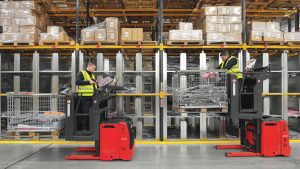In the ever-evolving landscape of the manufacturing industry, automation has become a game-changer, leading to increased efficiency, precision, and cost savings. One such innovation that has revolutionized the manufacturing process is the picking robot. These advanced robotic systems have the ability to streamline the tedious and time-consuming task of picking and packing items, making them invaluable assets for businesses worldwide. This article will delve into the key benefits and applications of picking robots and how they are transforming the manufacturing industry.

Enhanced productivity and efficiency:
Picking robots are designed to perform repetitive tasks with unparalleled speed and accuracy, significantly boosting productivity on the factory floor. These robots are equipped with advanced vision systems and artificial intelligence algorithms, enabling them to identify and locate objects swiftly. With their ability to work around the clock, picking robots can complete tasks in a fraction of the time it takes for human workers to do the same job. By automating the picking process, manufacturers can achieve higher throughput rates, leading to increased efficiency and output.
Improved quality control:
Maintaining consistent quality is crucial in the manufacturing industry. Picking robots play a pivotal role in ensuring high-quality standards by minimizing human errors and reducing the risk of damage or mishandling of products. With their precise and gentle movements, picking robots can handle fragile items or components that demand a delicate touch. The advanced sensors integrated into these robots help them detect flaws, defects, or inconsistencies in products, allowing manufacturers to identify and rectify potential issues before they reach the market.
Flexibility and adaptability:
Picking robots are highly versatile and can be programmed to handle a wide range of items, regardless of their shape, size, or weight. This flexibility is particularly beneficial for industries that deal with a variety of products or frequently change their production lines. The ability to quickly reconfigure the robot’s programming enables manufacturers to adapt to changing demands or introduce new products without significant downtime. Picking robots can be integrated seamlessly into existing production lines, making them a cost-effective solution for businesses looking to enhance their operations.
Reduction in labor costs:
By automating the picking process, manufacturers can reduce their reliance on human labor, leading to significant cost savings. Picking robots can handle repetitive and physically demanding tasks, freeing up human workers to focus on more complex and value-added activities. With the rising costs of labor, particularly in countries with higher minimum wages, investing in picking robots can help manufacturers remain competitive in the global market.
Safe and ergonomic working environments:
Ensuring the safety and well-being of workers is a top priority for any manufacturing facility. Picking robots contribute to creating a safer workplace by taking over hazardous tasks, such as lifting heavy objects or working in environments with potentially harmful substances. By reducing the risk of workplace injuries, manufacturers can not only protect their workforce but also avoid costly legal issues and downtime associated with accidents.
Picking robots have undoubtedly transformed the manufacturing industry by significantly improving productivity, enhancing quality control, and reducing labor costs. With their speed, precision, and adaptability, these robotic systems have become indispensable assets for businesses looking to stay competitive in a rapidly changing market. As technology continues to advance, picking robots are poised to play an even greater role in revolutionizing manufacturing processes, leading to increased efficiency, profitability, and innovation. It is clear that the future of manufacturing lies in the hands of these exceptional machines.
